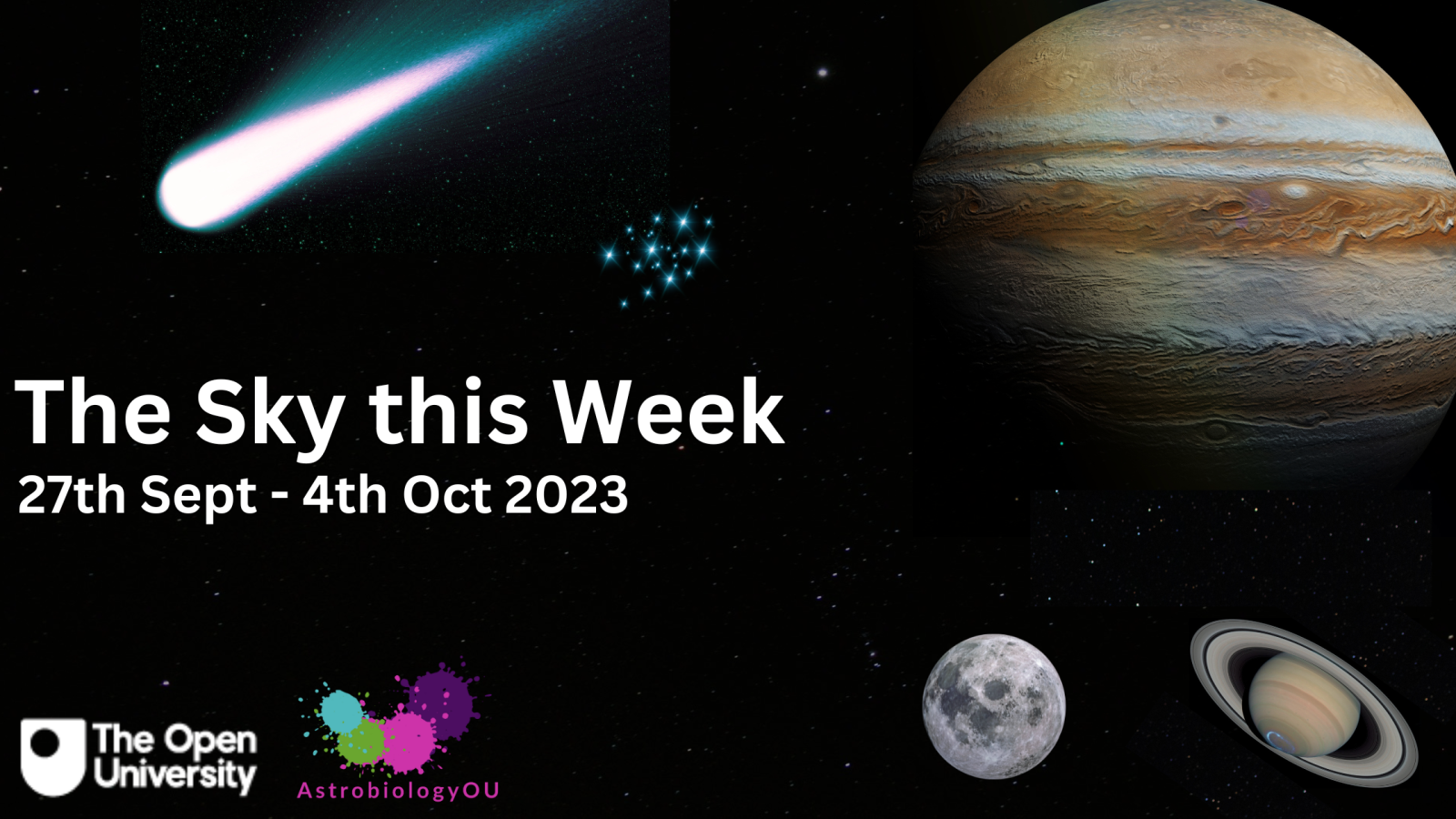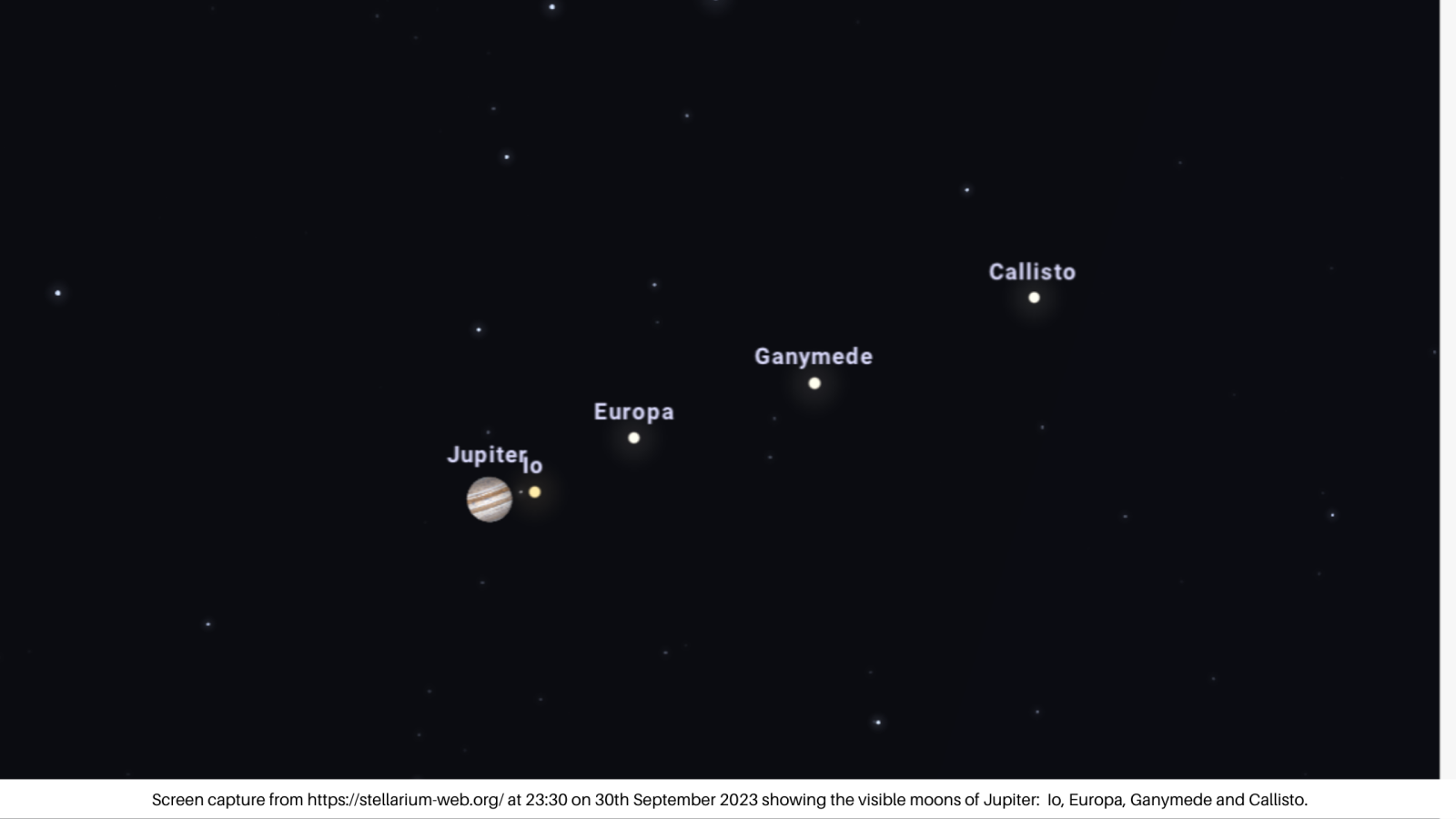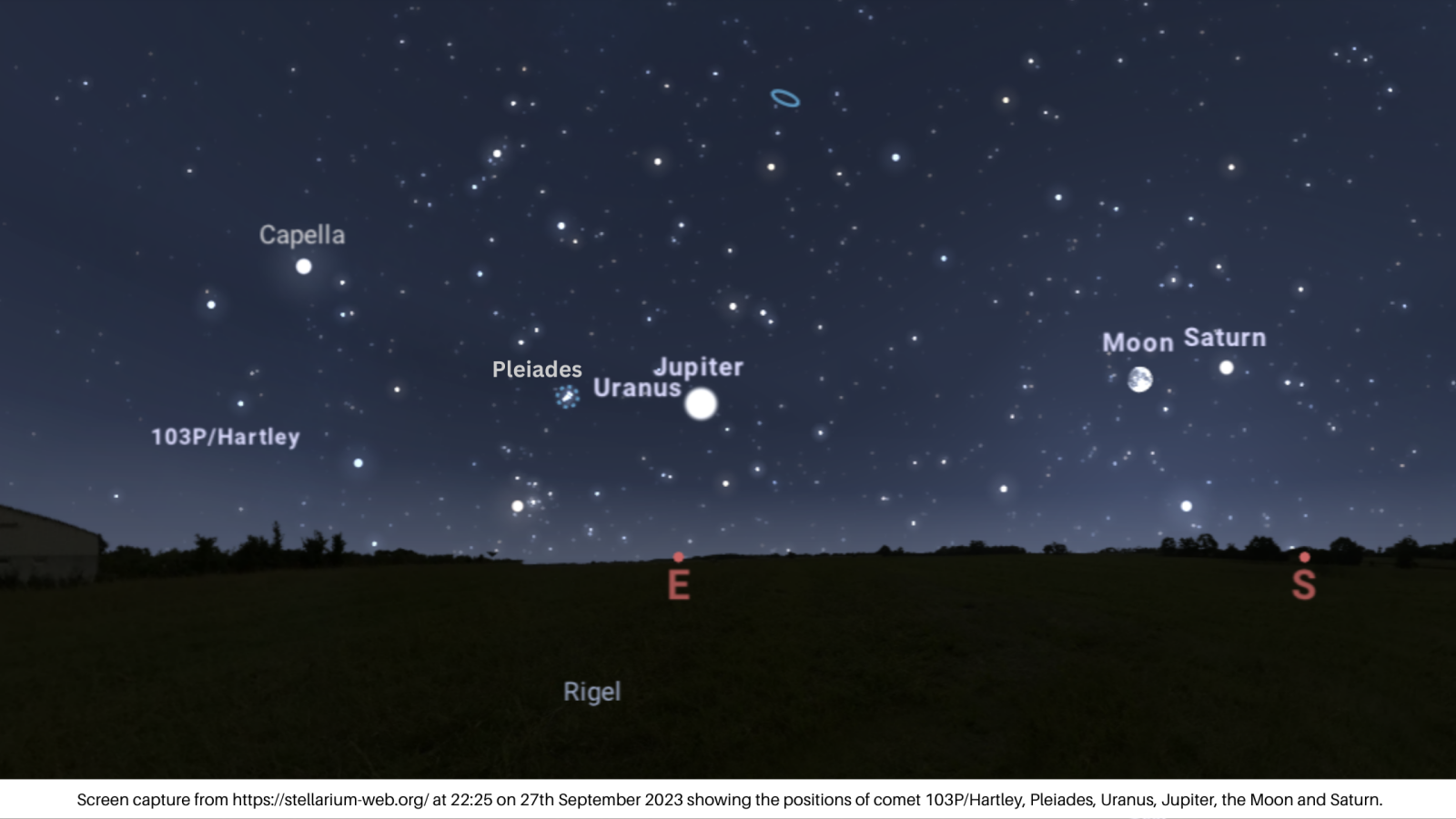You are here
- Home
- The Sky this Week - 27th Sept to 4th October
The Sky this Week - 27th Sept to 4th October

With just one week to go until World Space Week 2023, let’s explore what’s visible in the night sky this week. You may get a glimpse of the peanut-shaped Hartley 2 comet if you own a good pair of binoculars or a telescope, and you’ll almost certainly see Jupiter and Saturn, visible to the naked eye, shining brightly through the night.
The Moon
The moon will be visible towards the East after sunset, moving higher and towards the South-west throughout the night. At the start of the week, the Moon will be at 96%, reaching 100% full moon on Friday 29th September and back down to 66% on 4th October. Towards the end of the week, the Moon will still be above the horizon at sunrise, staying out well into the day on Wednesday 4th October.
Saturn
Just to the right of the Moon at the beginning of this week, you’ll be able to see Saturn from sunset until just before 4 am. As the week progresses, the Moon will move further away from Saturn, but the planet will remain visible starting South-east at sunset and moving higher and towards South-west as the night progresses. Saturn should be visible to the naked eye in areas with low light pollution and good viewing conditions.
Jupiter and its Moons
If the skies are clear, Jupiter will be visible to the naked eye all week as one of the brightest objects in the sky. The best viewing conditions will be towards the East around 9 pm. Observers with a telescope may be able to see Jupiter’s moons; Ganymede, Io and Callisto. Jupiter’s moon, Europa, will also be visible from around 10.30 pm as it peeps out from behind Jupiter on 27th September. On 30th September, around 23.30 pm, all four moons will be aligned in syzygy, to the right of the planet.
 Figure 1: The night sky as it will look on 30th September 2023 at 23:00 showing the moons of Jupiter; Callisto, Europa, Ganymede and Io, aligned in syzygy. Image from https://stellarium-web.org/.
Figure 1: The night sky as it will look on 30th September 2023 at 23:00 showing the moons of Jupiter; Callisto, Europa, Ganymede and Io, aligned in syzygy. Image from https://stellarium-web.org/.
Pleiades
Also known as the Sevens Sisters, this beautiful bright blue cluster will be visible this week through binoculars or even to the naked eye with good viewing conditions. The cluster will follow Jupiter around the sky, remaining on its left through the night.
 Figure 2: The Pleiades star cluster from https://commons.wikimedia.org/wiki/File:Pleiades_large.jpg
Figure 2: The Pleiades star cluster from https://commons.wikimedia.org/wiki/File:Pleiades_large.jpg
Comet 103P/Hartley
The start of this week provides a good opportunity for spotting the peanut-shaped Hartley 2 comet. Though the peanut shape will be indistinguishable, the comet will look like a fuzzy bright object moving through the sky and you’ll likely need a pair of binoculars. The best day for viewing will be on 27th September this week and comet will rise around 9pm in the North-east, reaching its highest point around 1am in the East.
Uranus
Likely only visible through a telescope or binoculars with very dark skies, Uranus will sit between Jupiter and the Pleiades this week. It will be a very faint blue dot, but the light from the moon may hinder observers. Try waiting until later in the week, around 4th October, when the moons brightness reduces to 66%.
 Figure 3: The night sky on 27th September 2023 at 22:25 showing the positions of comet 103P/Hartley, the Pleiades, Uranus, Jupiter, the Moon and Saturn. Image from https://stellarium-web.org/.
Figure 3: The night sky on 27th September 2023 at 22:25 showing the positions of comet 103P/Hartley, the Pleiades, Uranus, Jupiter, the Moon and Saturn. Image from https://stellarium-web.org/.
A cloud-free night in an area of low light pollution is best for spotting these objects. Try downloading a stargazing app, such as Stellarium or Sky Map, to help you find them.
Good luck and don’t forget to follow us on social media to find out what you can view in the sky next week during World Space Week.
Written by Aliss Rodricks, Engagement and Outreach Coordinator Intern
Latest News
- Intern Opportunity at ESTEC 10th November 2023
- CALICO: A Future Mission Review at ESA 23rd May 2023
- Join our team as a PDRA - CLOSED 9th February 2023
- PhD studentships now OPEN for applications 1st November 2022
- Senior Fellow Position **Closed to Applications** 20th September 2022